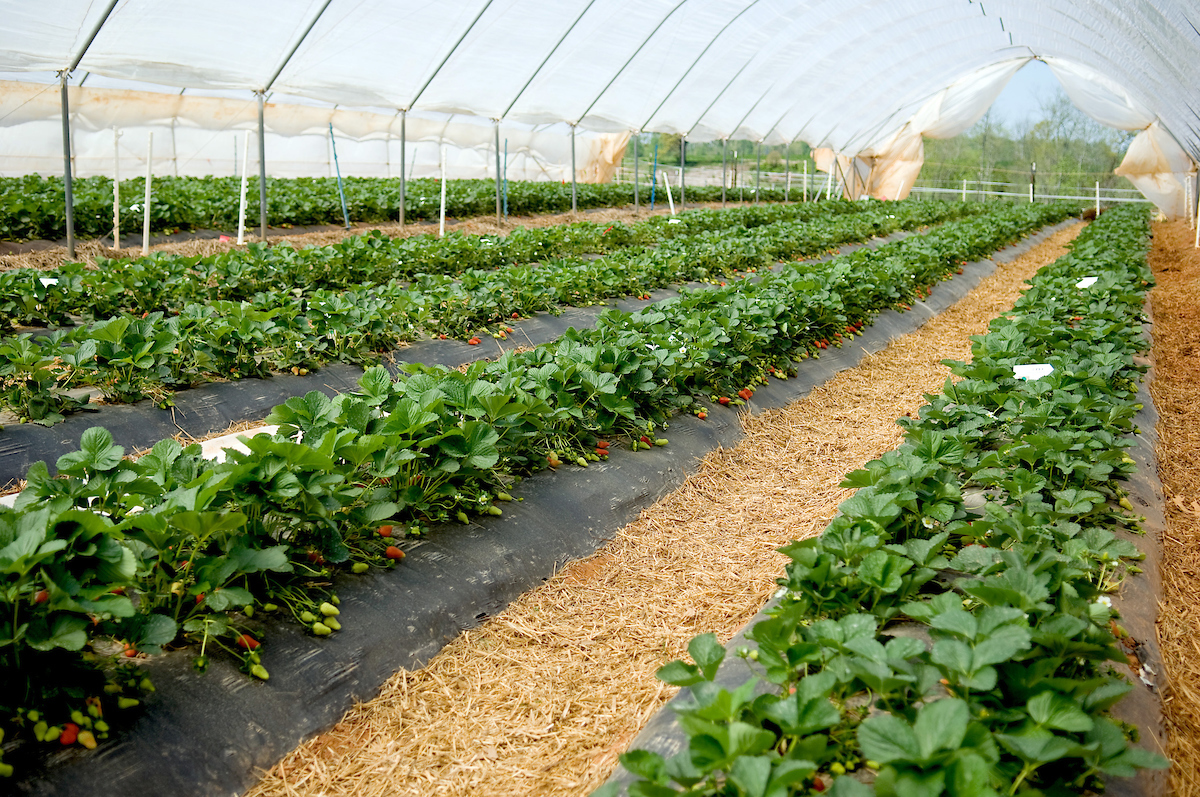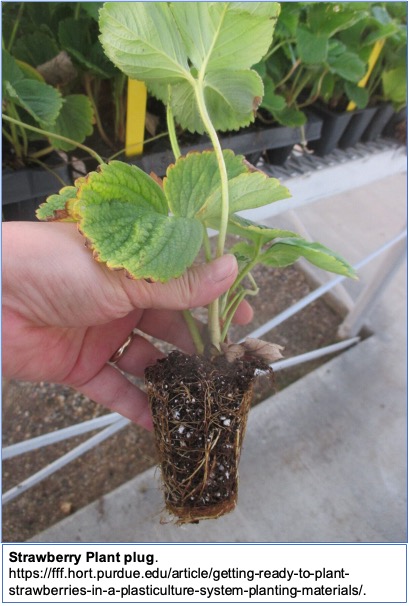Spring Strawberries Start in the Fall
go.ncsu.edu/readext?889123
en Español / em Português
El inglés es el idioma de control de esta página. En la medida en que haya algún conflicto entre la traducción al inglés y la traducción, el inglés prevalece.
Al hacer clic en el enlace de traducción se activa un servicio de traducción gratuito para convertir la página al español. Al igual que con cualquier traducción por Internet, la conversión no es sensible al contexto y puede que no traduzca el texto en su significado original. NC State Extension no garantiza la exactitud del texto traducido. Por favor, tenga en cuenta que algunas aplicaciones y/o servicios pueden no funcionar como se espera cuando se traducen.
Português
Inglês é o idioma de controle desta página. Na medida que haja algum conflito entre o texto original em Inglês e a tradução, o Inglês prevalece.
Ao clicar no link de tradução, um serviço gratuito de tradução será ativado para converter a página para o Português. Como em qualquer tradução pela internet, a conversão não é sensivel ao contexto e pode não ocorrer a tradução para o significado orginal. O serviço de Extensão da Carolina do Norte (NC State Extension) não garante a exatidão do texto traduzido. Por favor, observe que algumas funções ou serviços podem não funcionar como esperado após a tradução.
English
English is the controlling language of this page. To the extent there is any conflict between the English text and the translation, English controls.
Clicking on the translation link activates a free translation service to convert the page to Spanish. As with any Internet translation, the conversion is not context-sensitive and may not translate the text to its original meaning. NC State Extension does not guarantee the accuracy of the translated text. Please note that some applications and/or services may not function as expected when translated.
Collapse ▲It may sound odd, but as summer ends and fall begins in North Carolina, so does the start of our spring strawberry crop. Strawberries are a NC staple with numerous u-pick operations accessible across the state. However, many residents may not be aware that these early spring traditions of fresh picked strawberries begin with planting in late September into early October.
As a cool season fruit, strawberries grow best when temperatures our mild and insect and disease populations are at their lowest. The majority of North Carolina’s commercial strawberry crop is grown using an annual plastic mulch and drip irrigation system that helps to moderate soil temperature and conserve soil moisture. This is one of the reasons North Carolina is the third largest fresh market strawberry producer in the country, with the industry almost entirely based on small-to medium-size family farms, selling at U-pick and ready-pick roadside stands and in farmers markets in nearly all 100 counties.

Research stations across the state are assessing strawberry production in high tunnels. Research on the economics of this production method is forthcoming..Photo by Becky Kirkland
North Carolina strawberry growers often grow June bearing Chandler and Camarosa strawberry varieties that were originally developed in California. These varieties our adaptable to our climate and produce a single crop of berries with fewer daylight hours (June bearing) that we experience during cooler months. Everbearing and Day neutral strawberry varieties produce flowers in spring as well, but also produce fruit into summer and fall; however, these varieties are poorly adapted to our climate and typically are avoided.
Home gardeners can plant strawberries in their own gardens, but now is the time to start looking for plants. Variety choice may be limited during the fall so look for June bearing varieties like Chandler, Camarosa, or Sweet Charlie. Plants may come as plugs (plants with soil and roots), bareroot (no soil, only roots), or cut-offs (bareroot plants with foliage cut off). Plugs are the easiest for home gardeners to plant and can be treated like most other transplants.
Transplant plugs into well-prepared garden soil, paying careful attention to ensure the crown of the plant (the center of plant where the leaves grow out of) if set just above the soil surface. If you bury the crown too deep, plants become stunted and will produce little fruit. Plants should be spaced 12-18” apart in rows 2-3’ wide. Apply four pounds of a complete fertilizer such as 10-10-10 or 8-8-8 per 100 foot of row, 2-3 weeks ahead of planting. Water plants in well following setting and apply additional sidedress nitrogen fertilizer in late January to early February. Plants should retain a dark green color as they grow. Plants are hardy to temperatures below freezing but flowers and fruit will be damaged by hard freeze events. Light weight floating row covers can be used to protect fruit during freeze events, assuming they are applied several hours before expected freezing temperatures. Row covers should be removed during warm days, as temperatures can rise quickly underneath.
Provide plants with adequate irrigation and pay special attention to weed control. Strawberries do not tolerate competition from weeds or heavy cultivation around roots. Hand weeding is your best option to maximize growth. Look for strawberry buds to begin swelling in March into April. As warm weather increases into May, strawberries will begin to send out runners, signaling the end of the production season. In June, remove the plants from the garden to decrease the chance of retaining disease and insect pests for future crops.
If you would like to learn more about growing strawberries in the home garden then review the NC State Extension Garden strawberry note. You can also contact Daniel Simpson at 252-745-4121 or daniel_simpson@ncsu.edu for additional information.





